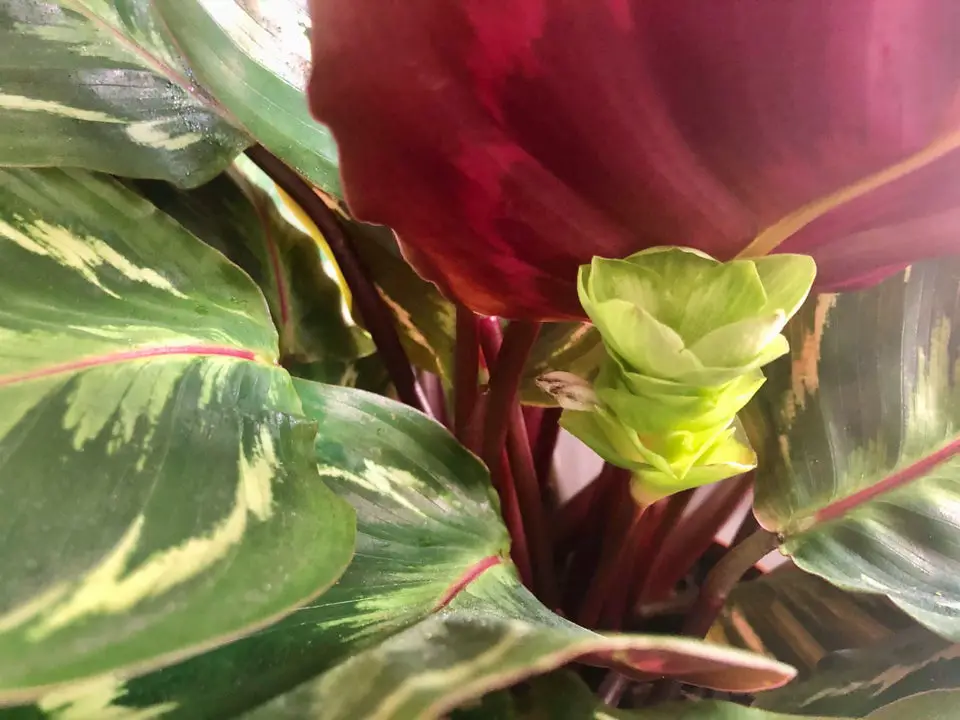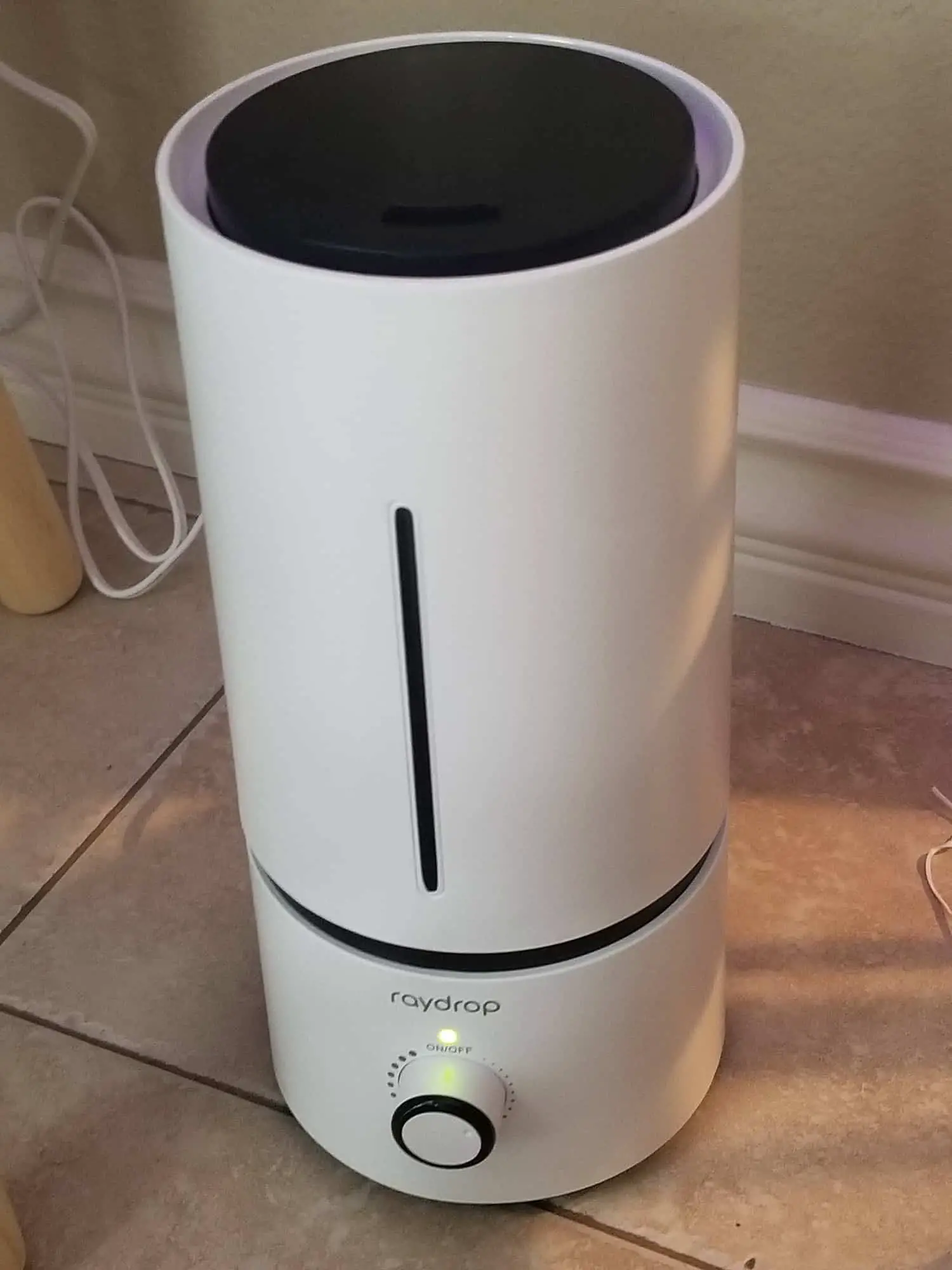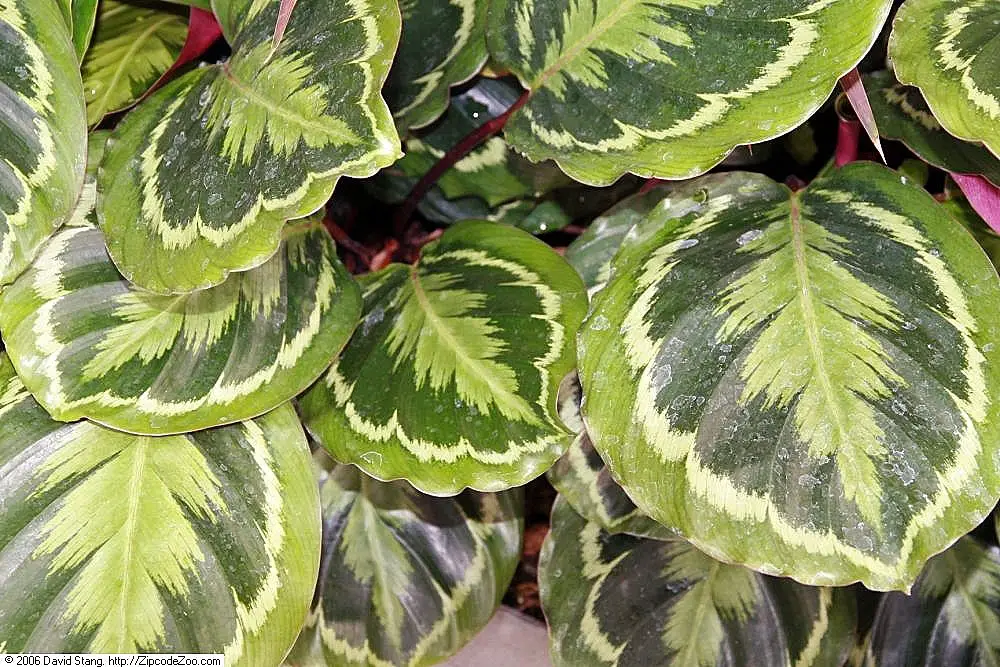Calathea roseopicta ‘Medallion,’ which is commonly referred to as Calathea Medallion, is a houseplant prized for its beautifully patterned, round leaves. Although Calatheas in general have earned the unfortunate reputation of being difficult to keep alive, these plants are easy to care for as long as your plant is watered properly and receives enough light. These plants are also good at showing you when they are unhappy, which makes it easier to correct any potential problems. The table below summarizes Calathea Medallion’s care requirements.
| Scientific Name | Calathea roseopicta ‘Medallion’ |
| Common Name | Calathea Medallion |
| Lighting Requirements | Medium light |
| Watering Requirements | Water Calathea Medallion frequently enough to keep the soil moist (but not soaking wet) from May through August. During the rest of the year, allow the top 1-inch of soil to completely dry between watering sessions. |
| Soil Mix | 1 part peat-based potting soil, 1 part perlite |
| Fertilizer | Fertilize with an all-purpose fertilizer diluted to half strength every 4-6 weeks during the growing season (May-August). |
| Temperature | 65oF (18oC) to 85oF (30oC). Avoid temperatures below 60oF (16oC) . |
| Humidity | 50% to 70% |
| Toxicity | Not toxic to dogs and cats |
About Calathea Medallion
Calathea roseopicta ‘Medallion,’ which is commonly referred to as Calathea Medallion, is known for its round, beautifully patterned leaves. Like other plants belonging to the Calathea genus, these plants belong to the Marantaceae (Prayer Plant) family.
An interesting aspect of this plant is that a Calathea Medallion’s leaves will move throughout the day. This phenomenon is referred to as nyctinasty. The video below shows how these plants move throughout the day.
Calathea Medallion Blooms

Some Calathea Medallions will produce blooms, but they do not have the striking appearance that the plant’s leaves do. Although Calathea Medallion blooms will not hurt the plant, some houseplant growers recommend snipping off the blooms. This is because blooms require a significant amount of energy from the plant. Snipping the blooms allows the plant to use its energy for growing more leaves.
Lighting Requirements For Calathea Medallion
Like other Calatheas, Calathea Medallian does best when it is grown in a place that is exposed to filtered medium light. The ideal location is near a north-facing window or east-facing window.
Direct sunlight from a south-facing window can easily scorch the leaves. Scorched leaves will have brown or yellow marks. Scorched leaves can be thought of as plant scars in the sense that the damage cannot be reversed. However, your plant will be fine as long as you move it to a location with less sunlight. The leaf pattern may also fade if they get too much light.
If your Calathea Medallion is exposed to insufficient light, the plant will exhibit stunted growth or stop growing altogether. The leaves’ coloring will also become less vibrant. Although Calatheas are often thought of as low-light plants, the plant does still needs a fair amount of light to survive. Do not be afraid to move your plant around and experiment with different spots within your home. Just keep a close eye on how your plant responds to changes in light.
Watering Calathea Medallion
Water your Calathea Medallion frequently enough to keep the soil moist (but not waterlogged) during the growing season (May through August). During the rest of the year, allow the top 1-inch of soil to completely dry between watering sessions.
Like other Calatheas, Calathea Medallion exhibits a lot of movement in response to its environmental conditions. This means that your plant will often show signs of underwatering or overwatering. When the plant needs, the tallest stem will begin to droop. Other signs of underwatering include curling leaves or the bottom leaves yellowing. If your plant shows signs of underwatering, simply increase the frequency of watering.
Signs of overwatering include drooping leaves and rotting stems. To save a Calathea from overwatering, first, give the plant a break from water until the roots and soil are dry. Then remove your plant from its pot and expose the roots by gently clearing away the soil. Use clean, sharp scissors or garden shears to cut off any dead or sick-looking roots. Healthy roots are white and firm while unhealthy roots are dark brown/black and mushy. After pruning the unhealthy roots, repot your Calathea Medallion in fresh soil.
Do Calatheas need distilled water?
Calatheas are sensitive to the minerals and chlorine commonly found in municipal tap water. For this reason, it is best to water your Calatheas with rainwater or distilled water. If you live in a place with hard water, it is especially important to give your Calatheas distilled water rather than tap water. If you are in a pinch, you can use filtered tap water. Allow the water to sit on your counter for a few hours so that the chlorine can evaporate.
Best Soil Mix For Calathea Medallion
Soil is a critical part of plant health. Like other Calatheas, Calathea Medallion likes to grow in soil that is moist (but not soaking wet) at all times. However, the soil mix should still drain well. I recommend using a soil mix comprised of one part peat-based soil and one part perlite.
Why is my Calathea Medallion drooping heavily?
If your Calathea Medallion suddenly collapses, it is important to remedy the problem as soon as possible by repotting your plant! It is likely that the plant is growing in a soil type that is not suitable for Calatheas. Potting soil can often retain excessive amounts of water. Although Calatheas like to grow in soil that retains some water, too much water retention can inhibit the plant’s ability to take up oxygen and cause the plant to suffocate.
Gently remove the plant from its pot and check the bottom to see if the soil is saturated. If there is a lot of water at the bottom part of the soil, trim off any dead or diseased roots. Then repot your plant in a fresh soil mix comprised of about 50% perlite.
Fertilizing Calathea Medallion
Like other types of Calathea, Calathea Medallion will benefit from some fertilization. Regular fertilization will help your Calathea Medallion grow more quickly and improves the plant’s overall appearance. For optimal plant health, fertilize your Calathea Medallion every 4 to 6 weeks during the spring and summer months with an all-purpose houseplant fertilizer diluted to half strength. Calathea Medallion does not require fertilizer during the winter.
A white crust, which is a build-up of soluble salts, forming on the soil surface is a sign of over-fertilization. As previously mentioned, Calathea Medallion is sensitive to minerals. Therefore, salt build-up caused by over-fertilization can negatively impact the plant’s health. If you find that your plant is suffering from over-fertilization, flush the excess minerals from the soil profile by watering your plant thoroughly.
Ideal Temperature Range For Calathea Medallion
Calathea Medallion does best in temperatures between 65oF (18oC) and 85oF (30oC). Avoid placing your Calathea Medallion in a place where temperatures dip below 60oF (16oC) regularly. It is also important to avoid placing your Calathea Medallion near drafty doors and windows because these plants are sensitive to sudden changes in temperature.
Humidity Levels Suitable For Calathea Medallion
While most tropical plants prefer humid conditions, Calatheas are particularly sensitive to low humidity. The plant’s leaves will get brown and crispy if it is in an environment that is too dry.
Calathea Medallion look best when they are grown in an environment with a relative humidity between 50% and 70%. Most homes have an average relative humidity of 30% to 60%. To increase the humidity in the vicinity of your plant, I recommend purchasing a little humidifier near your Calathea Medallion. You can purchase a small humidifier on Amazon for under $25.

I have come across several sources that recommend misting your plants to compensate for dry conditions. Although misting can be therapeutic, it does not significantly increase the humidity and can cause fungal diseases. For this reason, I recommend not misting your plant.
Propagating Calathea Medallion
Like other Calatheas, it is easiest to propagate Calathea Medallion by division. The best time to propagate Calathea Medallion is when you are repotting during the spring. Carefully pull apart the plant at natural divisions and plant each divided section in its own pot.
Is Calathea Medallion toxic?
According to the American Society for the Prevention of Cruelty to Animals (ASPCA), Calathea Medallion is non-toxic to dogs, cats, and horses.

